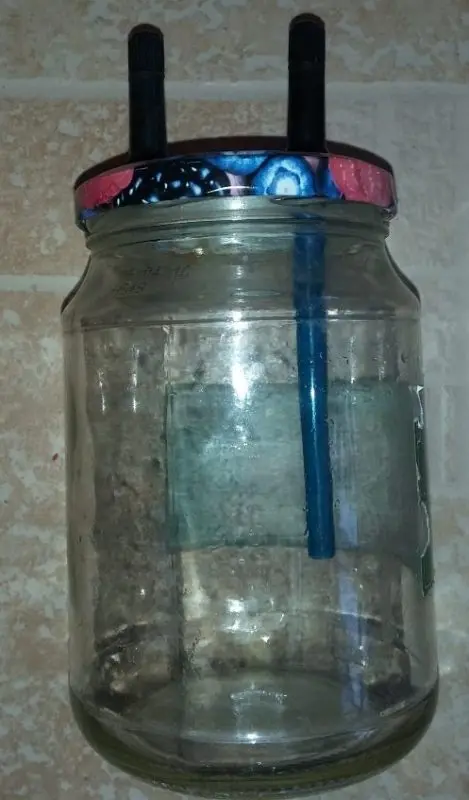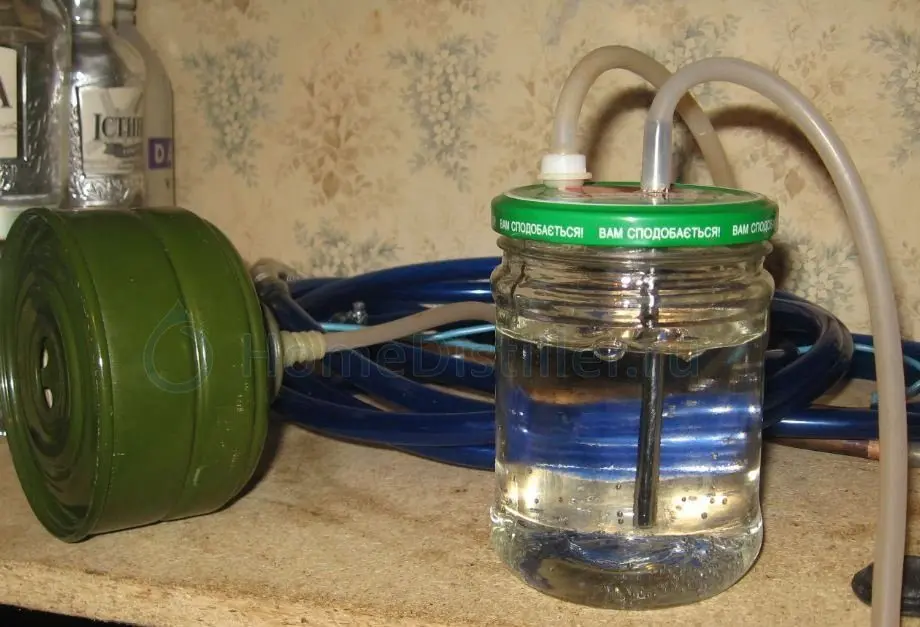Contents
The unpleasant smell of mash causes a lot of problems for residents of apartment buildings who do not have the opportunity to leave the fermentation tank in a non-residential building or on the street. Moreover, conflicts with neighbors due to the characteristic stench are not the worst. It is much more important that carbon dioxide from fermentation can worsen the health of the moonshiner and his household, so it is very important to remove the smell of mash in the apartment. To do this, there are a number of methods that are best used in a complex manner.
Theory
Many distillers mistakenly believe that carbon dioxide (CO2) is the cause of the smell in mash. In fact, carbon dioxide has no smell, and the stench is mainly given by carboxylic acids, which are picked up by CO2 molecules and enter the receiving tank of the water seal, and then into the air.
The concentration of carboxylic acids depends on the chemical composition of the mash (raw materials), yeast strain, room temperature and fermentation duration. It is impossible to make mash completely odorless, but it is quite possible to reduce the stench.
To minimize the smell of mash you need:
- invert sugar;
- use special wine and alcohol yeast, the worst in this regard are baking strains, which are not always intended for alcoholic fermentation;
- use water with a minimum chlorine content;
- try to reduce the fermentation time by maintaining the optimum temperature and hydromodulus;
- before distillation, remove the mash from the sediment, clean it with bentonite or other methods;
- distill the mash into raw alcohol at maximum speed.
For a mash volume of up to 15 liters and a sufficiently large room (from 12-13 sq. M), the proposed methods are almost guaranteed to solve the problem, provided they are applied in a complex manner. However, for a volume of 20 liters or more and / or a small enclosed space, such as a toilet, bathroom or closet, it is necessary to eliminate the smell of mash in the apartment using more advanced means.
How to get rid of the smell of mash in the apartment
Although carbon dioxide is not the cause of the smell, it is a “peddler” of carboxylic acids and other stinking substances, so all methods are aimed at removing CO2 or filtering it.
To apply all methods except chemical, you first need to modify the receiving capacity of the water seal, making it airtight. In fact, you will get a dry steamer, in which the tube from the fermentation tank will be immersed in water, and the tube that takes carbon dioxide out of the tank to the outside should be short and not touch the water. In the case of a glove, an exit tube is immediately connected to one of the fingers.

There will be no smell if the water from the sealed container is changed once a day. The disadvantage of this approach is that with strong fermentation of large volumes of mash, the pressure inside can break the container, therefore, for safety reasons, this method is not recommended.
Removing the smell of mash into the sewer, exhaust hood or outside
These methods completely solve the problem of unpleasant odor, and at the same time remove carbon dioxide, which, at a high concentration in the apartment, in itself causes a deterioration in the health of residents: weakness, drowsiness, headaches, etc. The disadvantage is that the place with the fermentation tank should be close to the window, hood or sewer, otherwise you will have to pipe through half the apartment.
The easiest way is to remove the smell into the ventilation. It is enough to insert the outlet tube into the hood. Problems arise if the ventilation does not work well, then the waste “flavors” can remain in the apartment or get to the neighbors from above.
The gas outlet to the window or window needs to be improved. To make the method work even in winter and with closed windows, a hole for the tube can be drilled in a frame, window sill or wall. Disadvantages: aesthetically, the pipe in the window looks ugly and the smell of mash can get to the neighbors through their open windows and vents.
To drain gas into the sewer, the outlet pipe must be mounted below the siphon (sewer water seal) of the sink or toilet. The disadvantage is that the plumbing needs to be improved.
Filtration of carbon dioxide through coal and other substances
Molecules of bad-smelling substances can be retained by passing the gas through porous substances, such as activated carbon. As a result, the carbon dioxide itself remains in the apartment, but it stops smelling. These methods are used if it is not possible to organize a system for removing CO2 to the outside, their advantage is that the fermentation tank can be located almost anywhere in the apartment.
The schematic diagram of the device is the same in all cases – a filter is connected to the gas outlet tube. In most cases, a gas mask filter, aquarium atomizer, gas mask box, or carbon filter is used to purify water. You can also make a coal column from a cylinder tightly packed with activated carbon, even a pharmacy one will do.

The method has three disadvantages. The first is that carbon dioxide remains in the apartment. The second – often the cleaning will be incomplete, that is, a slight smell of mash may remain. And with volumes of 40 liters or more, even with high-quality cleaning indoors, there will be a slight smell of alcohol, because coal passes ethanol molecules. The third disadvantage is that the filter needs to be changed periodically.
The easiest way is to filter carbon dioxide in a factory water seal. It is enough to add 1-2 tablets of pharmacy activated carbon to the water seal itself. On volumes of 5-25 liters, the method works well.

Chemical method for removing the smell of mash
You can make bad-smelling substances react in the water seal so that they decompose into harmless ones. It is enough just to choose the right chemical reagent. Soda ash (washing) and food (ordinary) soda, sometimes potassium permanganate, are used as reagents. The advantage of the method is that it is not necessary to modify the water seal and connect the output tube to the communications in the apartment. Disadvantages: since we do not know the chemical composition and concentrations of substances in the mash, it will not be possible to accurately select the composition of the reagents and their quantity, so some of the smell will most likely remain. Also, the method is not suitable if a glove is used instead of a water seal.
In the case of chemical methods, there is a risk that, due to the pressure difference, the soda water from the water seal enters the mash, which will completely ruin the future moonshine.
To eliminate the smell of mash, it is enough to add 1,5 tablespoons of ordinary and soda ash to 1,5 liters of water and mix. Then bring the tube from the fermentation tank into this water. In the case of potassium permanganate, you need to add 5 crystals per 1 liter of water.
How to get rid of the smell of mash during distillation
First of all, the advice that was considered in the theoretical part is relevant here: inversion, proper yeast, etc. Additionally, when heating, you should open a window or at least a window, this is a safety requirement. It would not be superfluous to check the ventilation (the match brought up should go out, and the sheet of paper should stick). It is dangerous to distill mash in a room with a non-working hood! Some moonshiners use forced ventilation systems whenever possible.
It should be remembered that a strong smell of mash during distillation appears only if the moonshine still is leaky – alcohol vapors seep out and give a characteristic “odor”. If there are no gaps in the system, then the vapors condense in the receiving tank and do not smell. Therefore, it is high time to replace the tube connections with a test with a clamp one and check the soldering of the cooler.
After each distillation, the entire apparatus and cube should be washed so that the remains of the mash, which also stink, do not accumulate in the system.
When distilling on a gas stove, you can mask the smell – put a half of a peeled onion on a gas burner, the aroma will be like fried onions.









